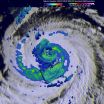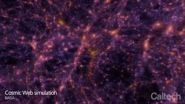(Press-News.org) Little details, such as the wrinkling or twitching of an eyelid, can have a big impact on whether a digitally rendered face looks real in a film or videogame. Now scientists at Disney Research have devised the first method to capture these subtleties of the eyelids in detail.
Their method, to be presented at ACM SIGGRAPH 2015, the International Conference on Computer Graphics and Interactive Techniques, in Los Angeles Aug. 9-13, captures detailed, dynamic skin features and creates plausible folding and stretching in areas that aren't directly captured during data collection.
Artists have always recognized that the eyes are a key feature for conveying emotion and even their subtle motions can contribute to the realism of a face. But despite tremendous progress in facial scanning, performance capture and skin rendering in recent years, creating photorealistic actors for films has required highly skilled artists to manually recreate eyelid movements.
"The eyelids are extremely challenging for digital scanning and reconstruction," said Thabo Beeler, a research scientist at Disney Research. "The skin rolls and folds inward when the eye opens and stretches over the eyeball when the eye is shut," he explained. Eyelashes can block large segments of the eyelids or cast shadows. "Even worse, in many facial expressions, a significant part of the eyelid is folded in and not visible at all."
Beeler, along with Amit Bermano, Yeara Kozlov, Derek Bradley, Bernd Bickel and Markus Gross, tackled the problem by first creating a geometric deformation model of the eyelid. Based on the physiological behavior of the eye-skin interface, this model provides plausible motions for the inevitable instances when eyelids are not fully visible on the original human actor.
This model is then personalized with image-based data. The team observed that wrinkles, in particular, can greatly change the folding of the eyelids - resulting in differences not only from person to person, but also between the left and the right eyelids.
"Eyelids are extremely unique and can produce extremely different wrinkles," Bermano noted. Their method therefore focuses on accurately determining the location of wrinkles from images and then predicting how the location and shape of the wrinkles will change based not only on the current state of the eye region, but also its history.
The method can be used with a variety of motion capture techniques, including the Medusa Performance Capture System developed by Disney Research, the researchers said.
"The ability to accurately capture eyelids can be a great addition to Medusa, which already has been used to create realistic digital doubles for several feature films," Bradley said.
INFORMATION:
For more information and a video, visit the project webpage at http://www.disneyresearch.com/publication/eyelidreconstruction/.
About Disney Research
Disney Research is a network of research laboratories supporting The Walt Disney Company. Its purpose is to pursue scientific and technological innovation to advance the company's broad media and entertainment efforts. Vice Presidents Jessica Hodgins and Markus Gross manage Disney Research facilities in Los Angeles, Pittsburgh, Zürich, and Boston and work closely with the Pixar and ILM research groups in the San Francisco Bay Area. Research topics include computer graphics, animation, video processing, computer vision, robotics, wireless & mobile computing, human-computer interaction, displays, behavioral economics, and machine learning.
Obtaining the aerodynamic properties necessary to simulate falling leaves or a tumbling box caught by the wind can be as simple as dropping the object off of a balcony and recording the fall, thanks to OmniAD, a data-driven technique developed at Disney Research.
You would not want to design an airplane with this method, but the results are good enough for simulating aerodynamic effects of light, 3-D objects in videogames and animations, said Nobuyuki Umetani of Disney Research and Tobias Martin of ETH Zurich. The system can even be used to design kites that actually ...
The same sort of video processing effects that usually require video to be shot in controlled environments where 3-D positions of cameras and objects are precisely known can be achieved with real-world, handheld video shot from consumer-grade cameras using a new approach pioneered by Disney Research.
The technique, developed with Braunschweig University of Technology, compensates for the lack of exact 3-D information about a scene by taking advantage of the fact that most elements of a scene are visible many times in a video. The researchers found they could sample pixels ...
A 3D-printed teddy bear can have a stiff head, a pliable tummy and bendable arms, even though all of it is made of the same relatively stiff material, using a new method developed by Disney Research.
By using the printer to alter the small-scale structure of the material, the Disney researchers showed they could vary its elasticity dramatically within the same object. They developed families of compatible microstructures with varying elastic properties, enabling designers to select the properties desired for each region of an object.
The team demonstrated their new ...
Computer graphics researchers have developed a way to efficiently render images of sand castles, gravel roads, snowmen, salt in a shaker or even ocean spray - any object consisting of randomly oriented, but discernible grains - that look realistic whether viewed from afar or up close.
The new method, developed by Disney Research in collaboration with researchers from Karlsruhe Institute of Technology, ETH Zurich, Cornell University and Dartmouth College, employs three different types of rendering techniques depending on the scale at which the object is viewed.
A sand ...
Chicago, August 5, 2015--A new national survey conducted by The Associated Press-NORC Center for Public Affairs Research reveals a disparity among blacks' and whites' perception of violence against civilians by police. Nearly three-quarters of black respondents consider violence against civilians by police officers to be an extremely or very serious problem, compared to less than 20 percent of whites. However, the poll also finds agreement across racial groups on many of the causes of police violence, as well as further consensus that changes in policies and procedures ...
Disney Research has created LinkEdit, interactive software for predictably changing the shape or motion of planar linkages used in such objects as kinetic sculptures, folding furniture and mechanical toys.
The LinkEdit software enables users to make desired changes in a linkage, such as altering its size or shape, while preserving other features, such as the walking gait of a linkage for a mechanical leg. The researchers demonstrated this capability by making alterations to the Jansen linkage, the building block to the famous walking sculptures created by artist Theo ...
Forehead wrinkles that rapidly deepen and crow's feet that appear suddenly around the eyes might distress the average person, but the ability to quickly and realistically incorporate such details in a facial reconstruction is the key feature of a new performance capture method developed at Disney Research.
The method, which requires only a single video camera such as a webcam, is the first to both operate in real-time and to capture facial features in high resolution, including such details as wrinkles.
"This could open up a variety of new applications, from casual ...
Heavy rain, towering thunderstorms, and a large area are things that NASA satellites observed as Typhoon Soudelor moves toward Taiwan on August 5, 2015.
NASA's Terra satellite passed over Soudelor on August 5, 2015 at 01:45 UTC and the Moderate Resolution Imaging Spectroradiometer (MODIS) instrument captured a visible image of the large storm in the Philippine Sea. The eye appeared to be cloud-filled as bands of thunderstorms spiraled into the center of the storm.
The Global Precipitation Measurement (GPM) mission core observatory, a satellite managed by both NASA and ...
A team of astronomers led by Caltech has discovered a giant swirling disk of gas 10 billion light-years away--a galaxy-in-the-making that is actively being fed cool primordial gas tracing back to the Big Bang. Using the Caltech-designed and -built Cosmic Web Imager (CWI) at Palomar Observatory, the researchers were able to image the protogalaxy and found that it is connected to a filament of the intergalactic medium, the cosmic web made of diffuse gas that crisscrosses between galaxies and extends throughout the universe.
The finding provides the strongest observational ...
Washington, DC, August 5, 2015 -- Potentially harmful bacteria can survive on endoscopes used to examine the interior of the digestive tract, despite a multi-step cleaning and disinfecting process, according to a study published in the August issue of the American Journal of Infection Control, the official publication of the Association for Professionals in Infection Control and Epidemiology (APIC).
Though endoscopes were cleaned in accordance with multi-society guidelines, viable microbes and residual contamination remained on surfaces after each stage of cleaning, ...

